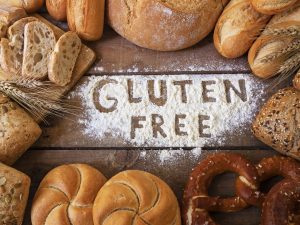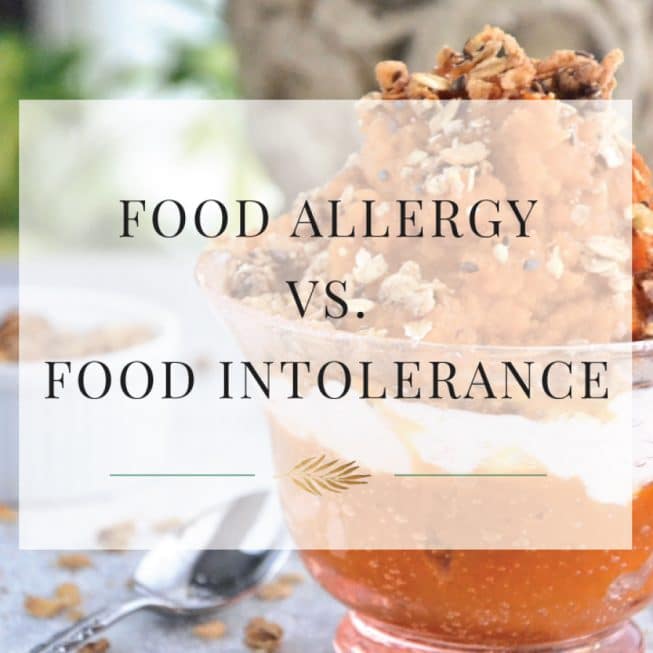“Bad digestion is the root of all evil” Hippocrates (The Father of Medicine)
Even Hippocrates knew over 2,000 years ago how significant the gut is. It can be connected to just about anything in the body. An unhealthy gut means an unhealthy body.
The terms allergy and intolerance are often used interchangeably, but they are not the same.
Allergy
Common Allergies:
- Peanuts
- Nuts
- Shellfish/seafood
- Dairy
- Eggs
- Gluten or wheat
- Soy
- Monosodium glutamate (MSG)
Simply put, an allergy involves the immune system and an intolerance does not. In an allergic reaction, your immune system reacts to the protein present in the food. An allergy is less likely to result from foods low in protein e.g. fruit and vegetables. The immune system is activated by immunoglobulins, in particular immunoglobulin E (IgE), and also possibly IgG, IgA and IgM.
Allergies are triggered by even the smallest amount of food e.g. traces of peanuts. Whereas, intolerances can be dose related e.g. lactose intolerant individuals may be able to tolerate cheese but not a straight glass of milk.
Allergy Symptoms:
- Skin – hives, acne, eczema, swelling and itching, and dark circles under the eyes (common in dairy allergy)
- Respiratory – nasal congestion, sneezing, asthma, coughing, and shortness of breath
- Gastrointestinal – swelling and itching of the lips and mouth, vomiting, reflux, colic, diarrhoea, and cramps
- Circulation – rapid heart rate, low blood pressure, low blood sugar, and dizziness
- Much more serious is anaphylactic shock – a severe reaction affecting one or more organ systems. This can cause swelling of the airways, difficulty breathing, and drop in blood pressure. Most cases are caused by bee stings or highly allergenic foods like peanuts. Anaphylaxis is life-threatening and an EpiPen (adrenaline injection) should be carried on-hand at all times

Intolerance
Common Intolerances:
There are other less common ones such as salicylates, amines, or sulphites present in wine and dried fruit.
Intolerance Symptoms:
- Bloating, cramps, gas, stomach pain, or diarrhoea
- Nausea or vomiting
- Heartburn
- Headaches
- Irritability and nervousness

Testing
Testing for food allergies and intolerances may include blood, skin prick, hair, kinesiology, or breath (lactose, fructose and FODMAPs). Or if you are a DIY person and intuitive with your body, an elimination diet. This may be more difficult for children as they are less able to identify and communicate their symptoms.
Keep in mind that tests are not 100% accurate. Some people find this hard to believe, but it is a fact of life that we can’t 100% rely on anything (trust your gut instinct!). A false positive or false negative result can occur.

Don’t Go Gluten Free… Yet!
A good example of this is testing for gluten intolerance.
It is recommended to eat four slices of wheat bread (about 10g of gluten) for adults or two slices for children, every single day for six weeks before the test! That is 168 slices of bread! If you have already trialled a gluten-free diet and you feel better for it, you wouldn’t go back to eating four slices of bread a day for $1,000.
This demonstrates the importance of seeking a healthcare practitioner before you try and do it on your own. If you suspect gluten intolerance or Coeliac disease (even though you are so excited to begin your gluten-free diet!) you must not commence it until you are tested.
One slice of wheat bread containing 2-2.5g of gluten is equal to:
- ½ cup wheat-based cereal
- 1 Weet-bix
- ½ cup wheat pasta
- ½ English muffin
- ½ large bread roll
- 4-5 crispbreads
- 8-10 crackers
- 2 small sweet biscuits
That is a lot of wheat to achieve 10g a day! If you don’t have enough gluten in your bloodstream at the time of testing, you would get a false negative result i.e. told that you are not gluten intolerant but you may very well be.

“An Apple a Day Keeps the Doctor Away”
This is not true when it comes to FODMAPs. If you are FODMAP intolerant you will regret eating an apple a day.
The phrase was originally “Eat an apple on going to bed, and you’ll keep the doctor from earning his bread”. Which later evolved to “an apple a day, no doctor to pay”.
It is a common, cheap fruit in most places, that is low in calories and high in fibre. Most other fruit is probably better in terms of antioxidants, but apples are widely accessible.
FODMAP is an acronym for:
Fermentable
Oligosaccharides
Disaccharides
Monosaccharides
And
Polyols
FODMAPs are found in every day, healthy foods. However, in people with IBS they can (not always) exacerbate symptoms. A low FODMAP diet may help to manage these symptoms. Look online to find lists of FODMAP-containing foods and FODMAP-free foods.
Before the acronym ‘FODMAPs’ was coined, some individuals were aware they couldn’t eat certain foods, but they didn’t know why. Advances in technology in the 1980’s and 90’s discovered the similarities between these foods – short-chain carbohydrates. It could be pinpointed to malabsorption of short-chain carbohydrates in the gut.
When FODMAPs reach the large intestine, they become food for the bacteria living there. The bacterial digestion of FODMAPs produce additional symptoms of IBS. FODMAPs are only considered FODMAPs if people are sensitive to their effects in the GI tract (such as in IBS).
FODMAPs excludes a lot of healthy foods. This diet is not ideal long-term. FODMAP foods are prebiotics which are the food for our probiotics. You may be intolerant to only one member of the FODMAPs family. Try to narrow down which foods are causing you grief. Use an elimination diet (see below) to do this.
“The dose makes the poison.” You may be able to tolerate small amounts of FODMAP foods but not an entire bowl of broccoli and Brussel sprouts.
A hydrogen/methane test or elimination diet can determine FODMAP intolerance.

Elimination Diet
An elimination diet is not used to describe one diet. It encompasses diets that temporarily remove sensitising food allergens (the ones listed above under ‘common allergens’). With the underlying goal that by removing these offenders from the diet, symptoms will resolve.
On an elimination diet, eat low allergy foods and keep your meals/snacks as simple as possible. Usually it is better to eat more variety of foods, but on an elimination diet it is the opposite.
Basic foods to eat are fruit (excluding FODMAPs and citrus fruits), vegetables (excluding nightshades), grains (non-gluten e.g. rice, quinoa, amaranth, buckwheat, millet), meat and fish, and dairy substitutes (coconut or rice milk – take a break from almond, soy and oat milk as they can be allergenic). Remember to avoid condiments, sauces and any processed foods that contain multiple ingredients. Plain rice crackers and rice cakes are acceptable. This diet should be maintained for about two weeks before reintroducing potential allergens.
A single-ingredient food can be introduced one at a time, in small portions, to determine if it causes a reaction. Wait a few days before introducing the next new food, this makes it easier to identify which food caused the reaction. This is because reactions can be immediate or delayed – ranging from minutes to hours after consumption of the allergen.
After an elimination diet, your intolerances will be more pronounced. Symptoms will be more obvious because while you have had a break from eating that food, your immune system has had a chance to build up antigens against it for next time. It is like your immune system has been preparing for an invasion. Before it was being caught off-guard time and time again. But now it has had time to rest, recover, and increase security. It is on alert and the security alarm has been set to on. Any attack will trigger the sensitive alarm system.

“Why does my young George have food allergies, but nobody did in my day?”
About 10-20% of the population has a food allergy or intolerance. Yet it was unheard of when our parents were growing up.
What is contributing to this?
- The rise of leaky gut
- Gut dysbiosis (lack of probiotics – good gut bacteria)
- Over-processing of foods e.g. wheat. Allergies are more common in developed than developing countries
- Environmental chemicals including pesticides and household cleaners
- Nutrient deficiencies due to poor diet
- Vitamin D deficiency
- Early exposure, as children aren’t exposed to allergens at a young age due to fear that they may be allergic (if their parents are). Children should be introduced younger than two or three years old. Even if the child doesn’t want to eat the food, you can start by dabbing a trace amount on their lips (e.g. peanut butter). Important: this should always be done under professional advice/supervision
- Genetics – leaky gut and gut dysbiosis is passed down by the mother. Pre-disposition to autoimmune diseases is passed down from both sides
- Pregnant women not eating allergenic foods out of fear of their growing baby becoming allergic
- Not breastfeeding – missing out on antibodies from breastmilk. In combination with animal formula being introduced too young when the baby’s immune system has not developed yet
Consult with a Naturopath/Nutritionist if you suspect a food allergy or intolerance.
Your Nutrition Mentor,




